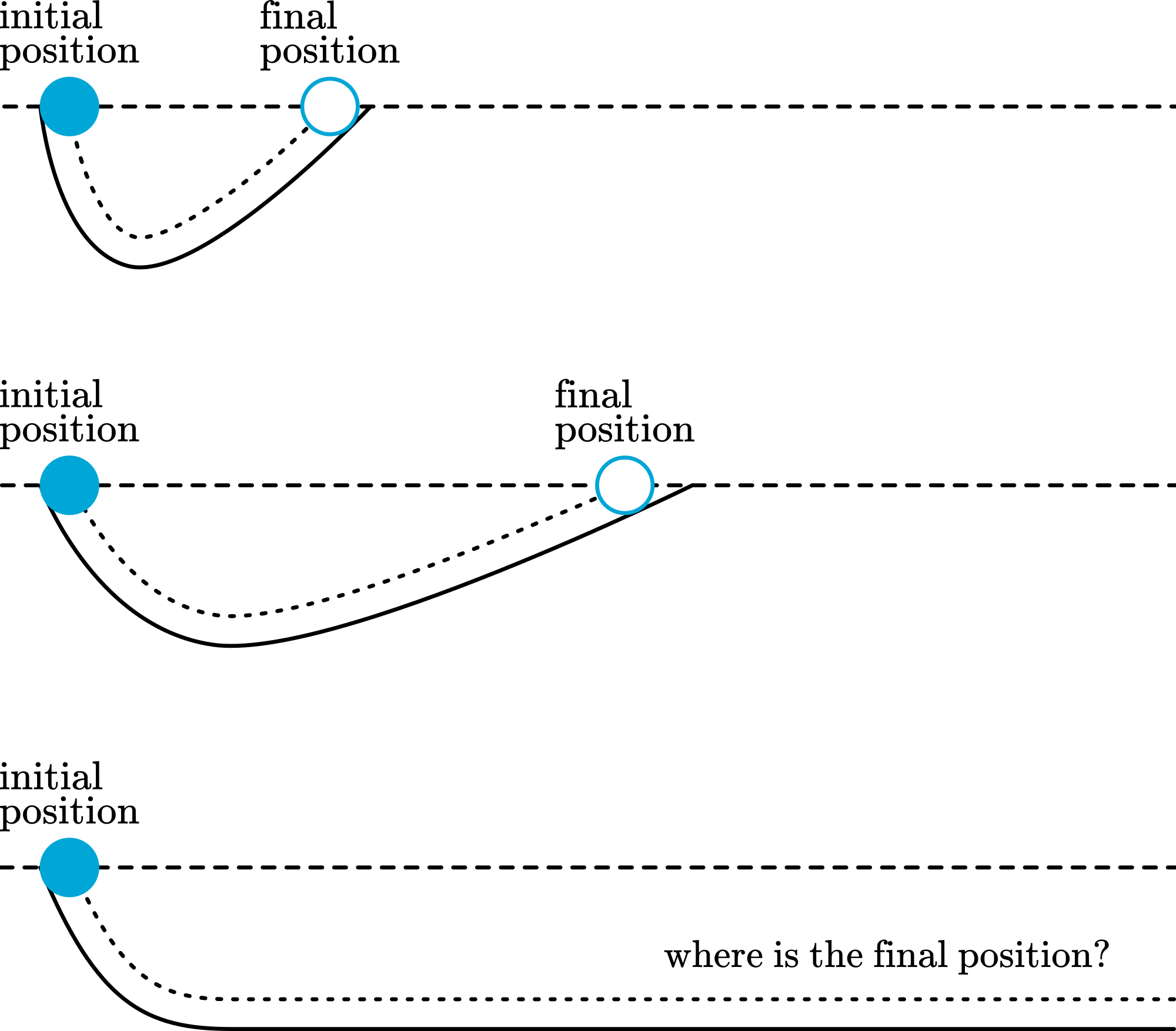01 Galileo’s Thoughts#
Aim#
To show the thought experiment of Galileo Galilei on the inertia of movement.
Subjects#
1F30 (Inertia of Motion)
Diagram#

Fig. 68 .#
Equipment#
Gutter (a curtain rail, bend properly).
Ball.
Clamping material (see Diagram).
Presentation#
The right-hand side of the gutter is placed at a steep angle. The ball is released at the top of the left-hand side of the gutter, rolls down and up on the right-hand side. It is observed that it almost reaches the same height as that at which it was released. Now the right-hand side of the gutter is made less steep by shifting the right-hand support to the right. Again, releasing the ball in the same fashion, it can be observed that it reaches almost the same height. It is also observed that the horizontal distance traveled is larger than in the first part of the demonstration.
The right-hand support of the gutter is placed in its most right position. Now the released ball travels the whole gutter.

Fig. 69 .#
The right-hand side support is removed, and this part of the gutter now lies horizontally on the table. Ask the students how far the ball will travel now when released as before: “What is its final position?” (see Figure 69). After receiving their answers, the ball can be released (In our setup, the ball disappears in a sink).
Explanation#
Galilei reasoned that when the right-hand part of the gutter is aligned horizontally, the ball can never reach the same height again. So, it will keep rolling to the right perpetually; the ball is moving and will remain in motion! This is what we have now dubbed Newton’s first law.
Remarks#
Open the door of your lecture room, and the ball will leave the room on its way to infinity.
Another reasoning of Galilei can also be related to this ball-and-gutter demonstration :
When the ball is going down, speed increases.
When the ball is going up, speed decreases;
So, when there is no going up or down, speed should remain the same!
Sources#
Mansfield, M and O’Sullivan, C., Understanding physics, pag. 37
Biezeveld, H. and Mathot, L., Scoop, Natuurkunde voor de bovenbouw, part 4/5 vwo, pag. 57
PSSC, College Physics, pag. 221
Young, H.D. and Freeman, R.A., University Physics, pag. 92
